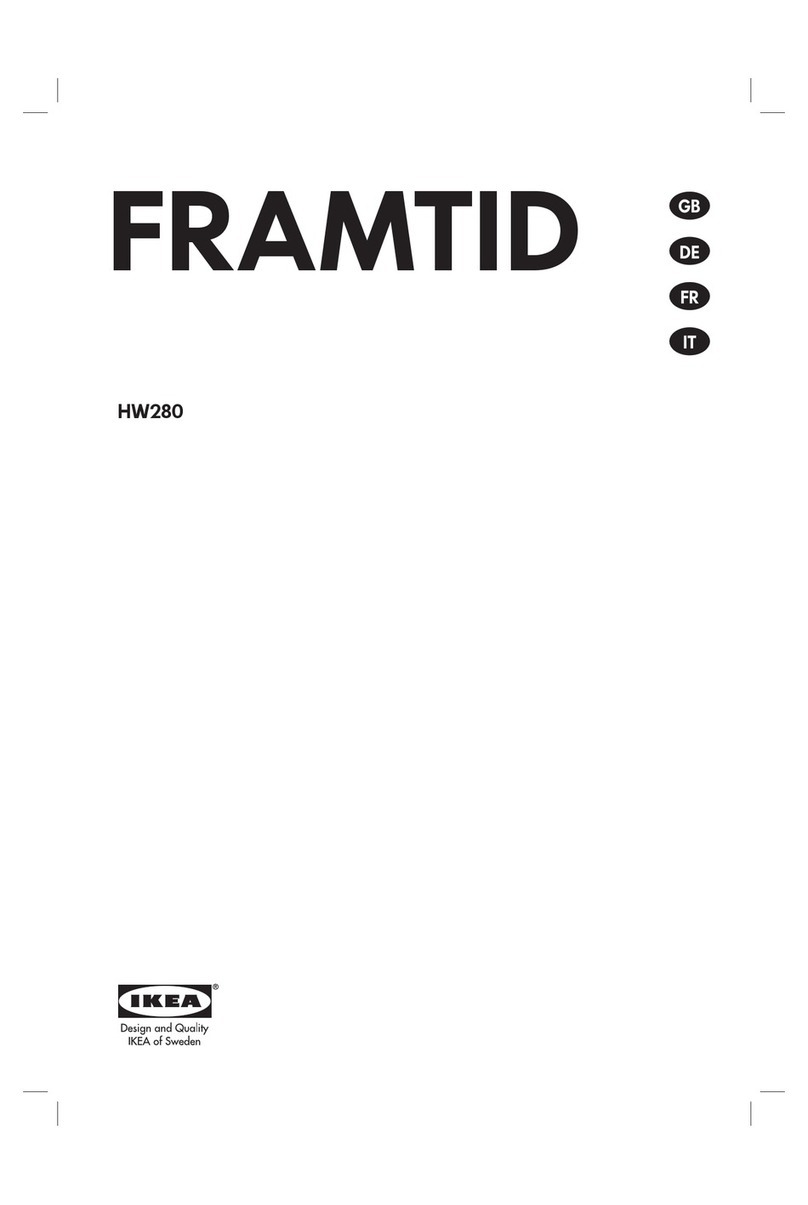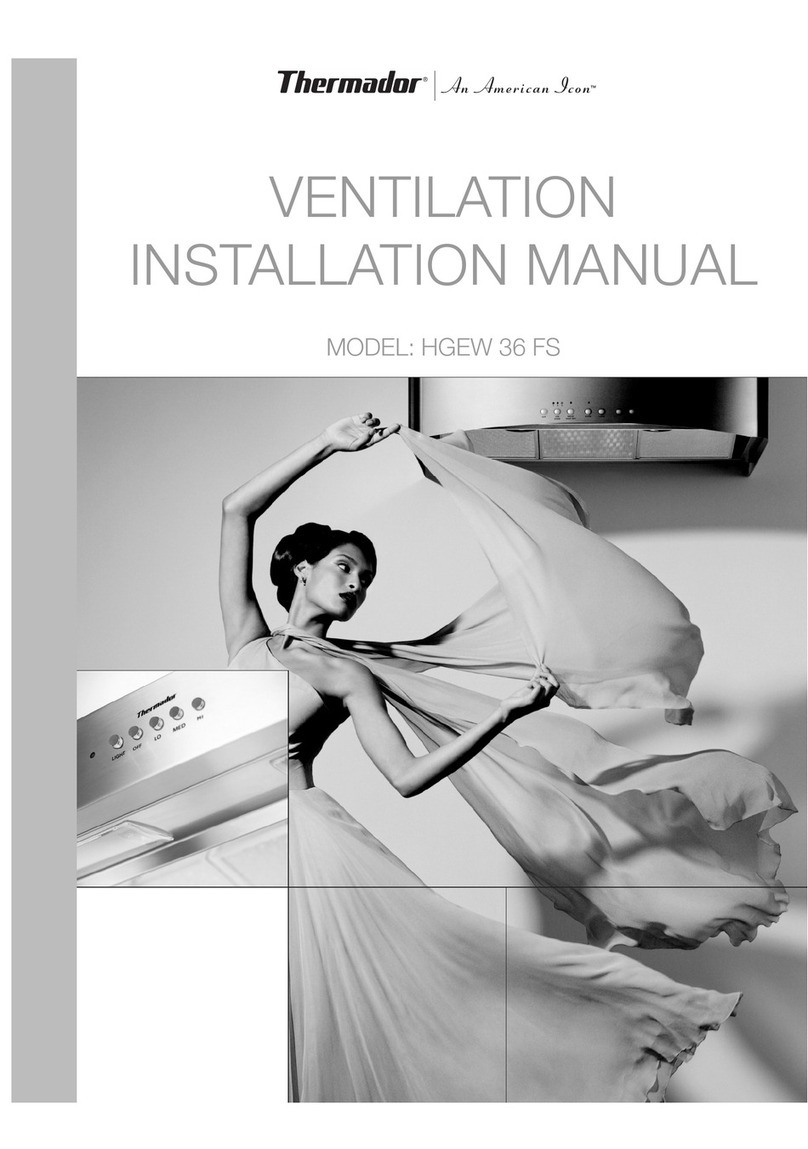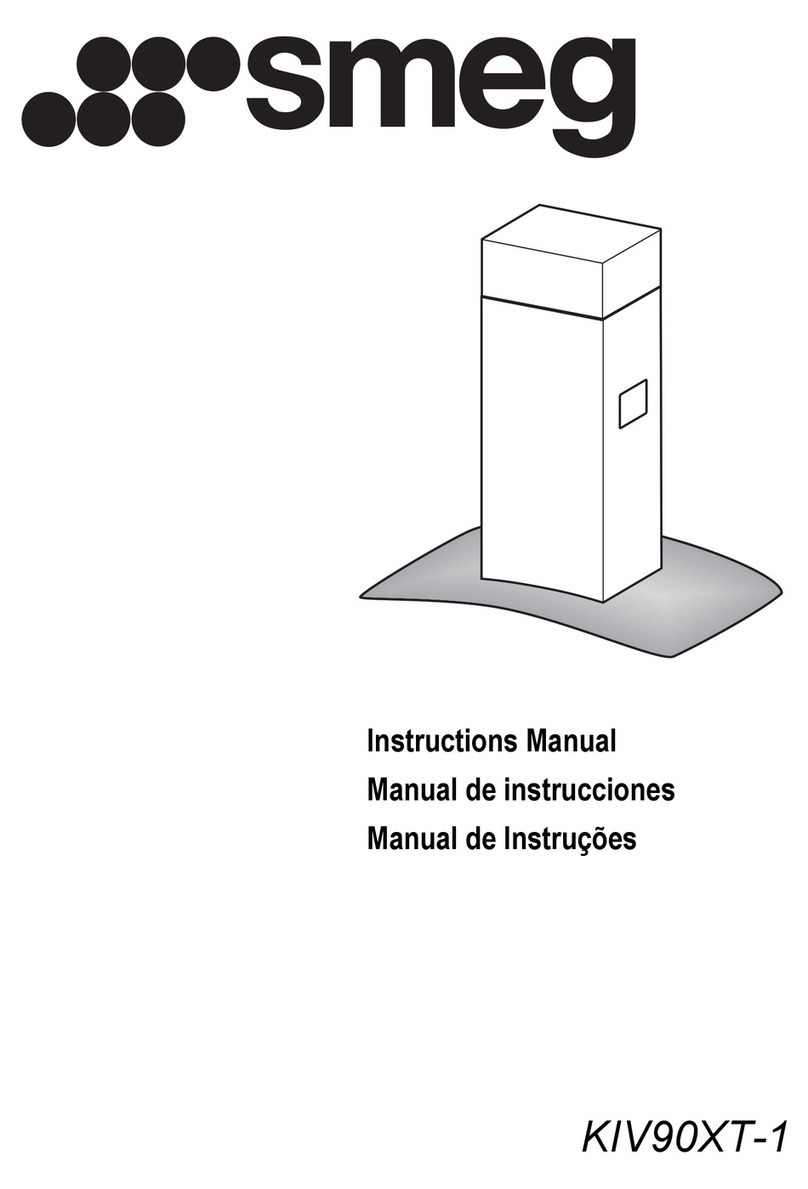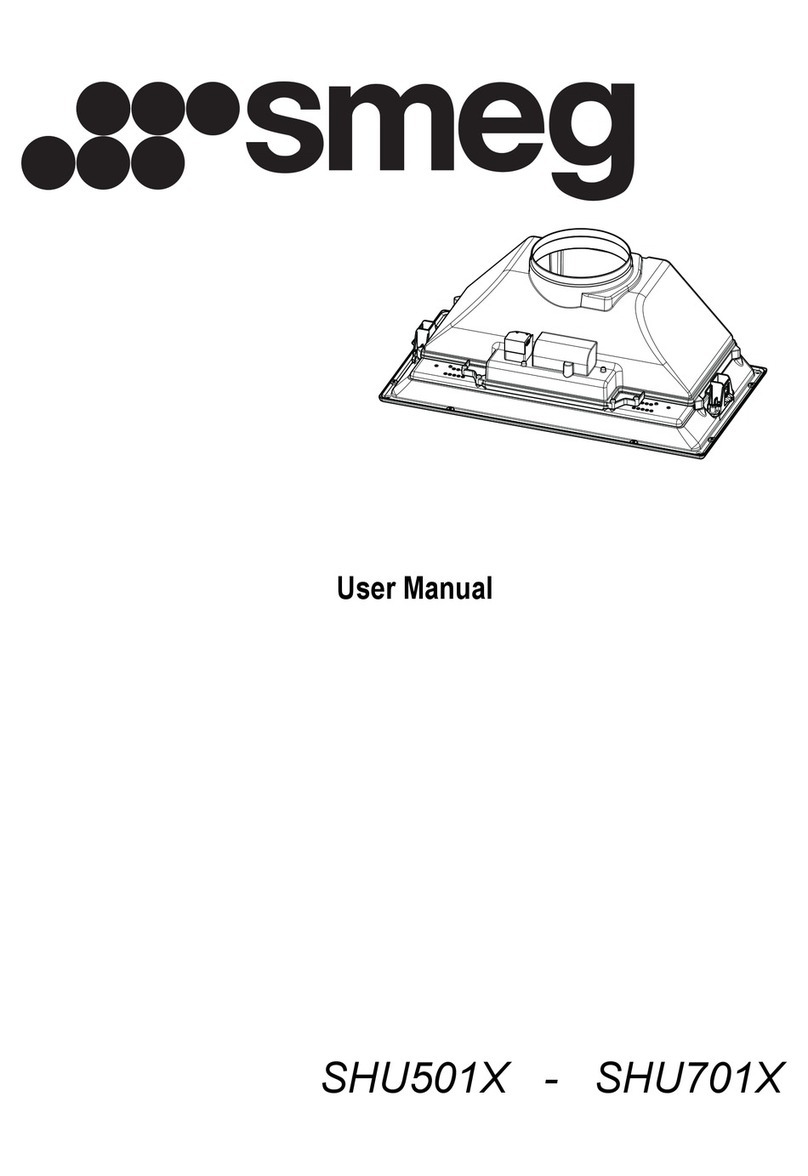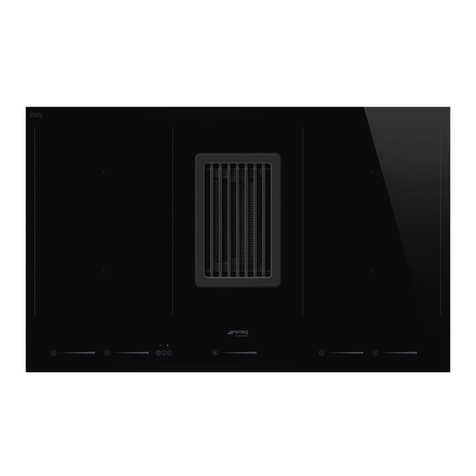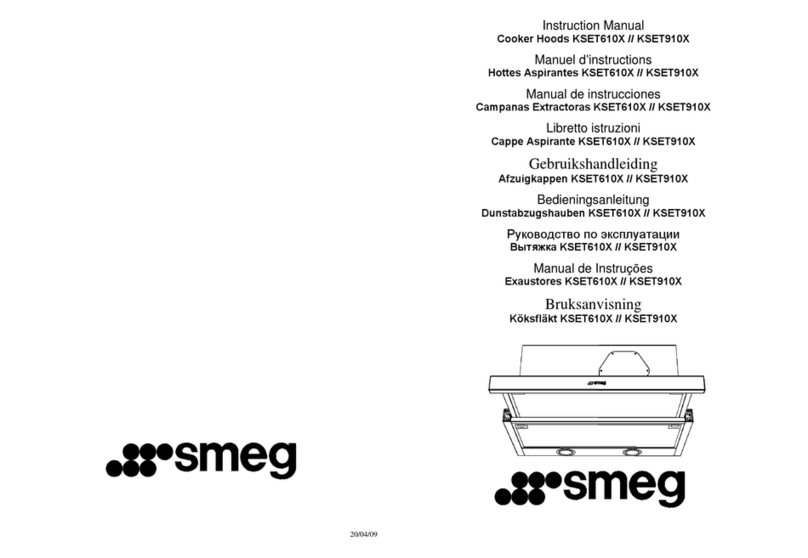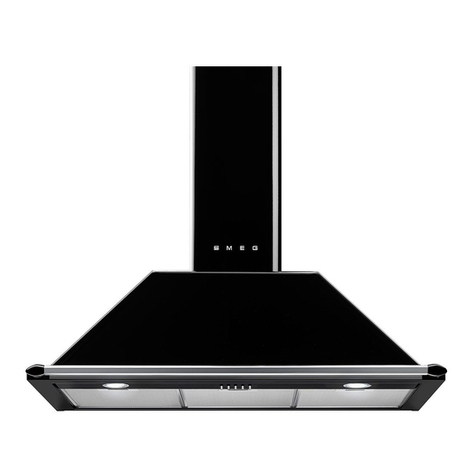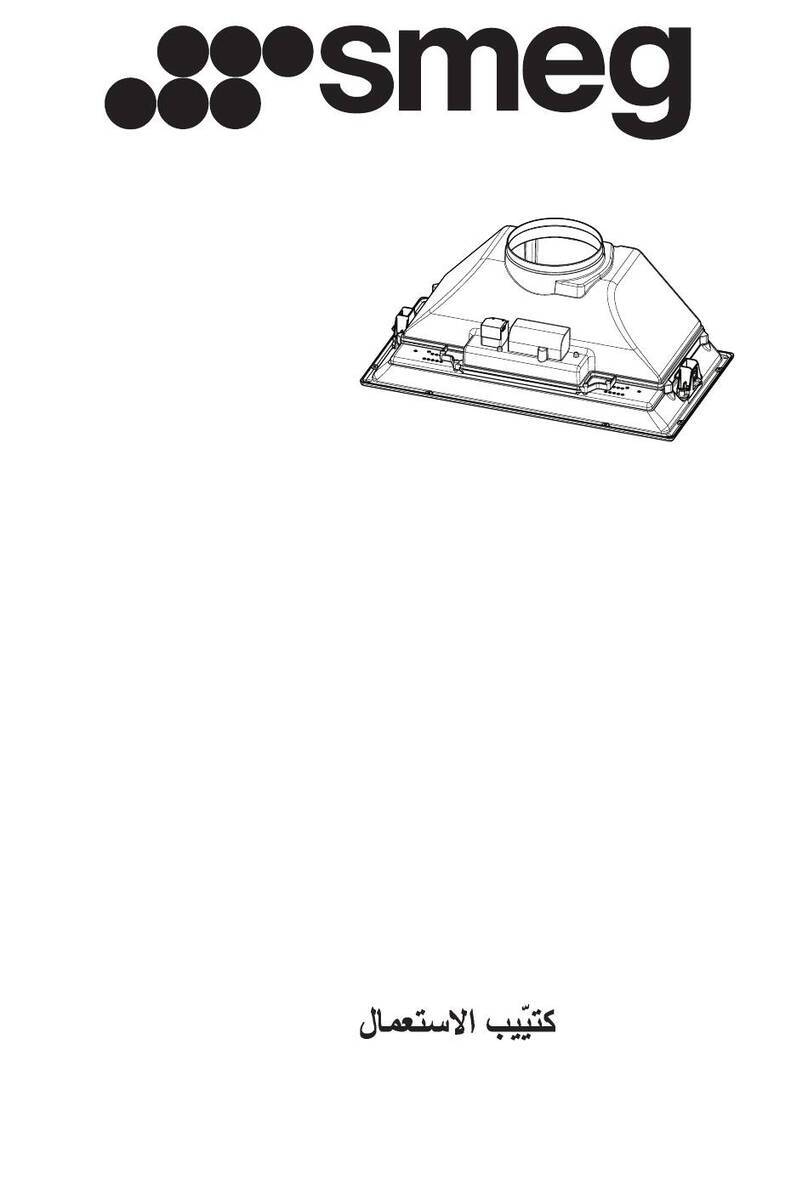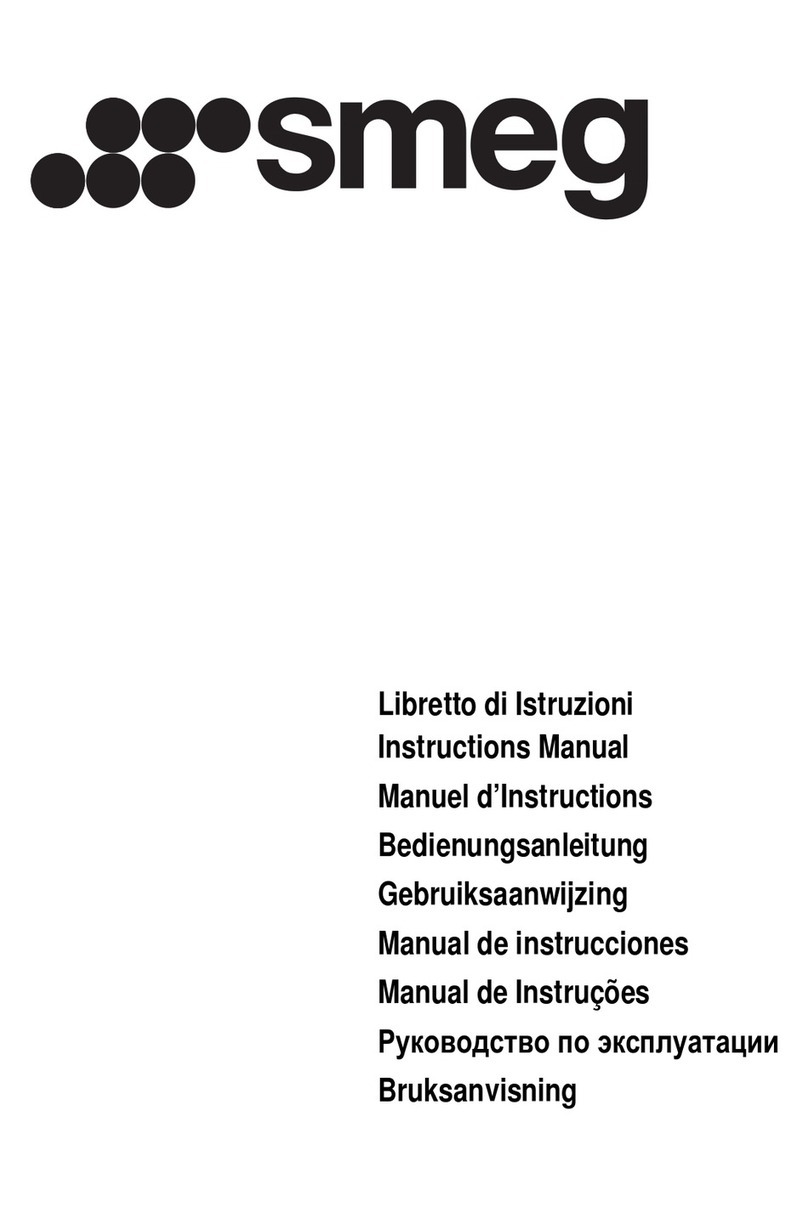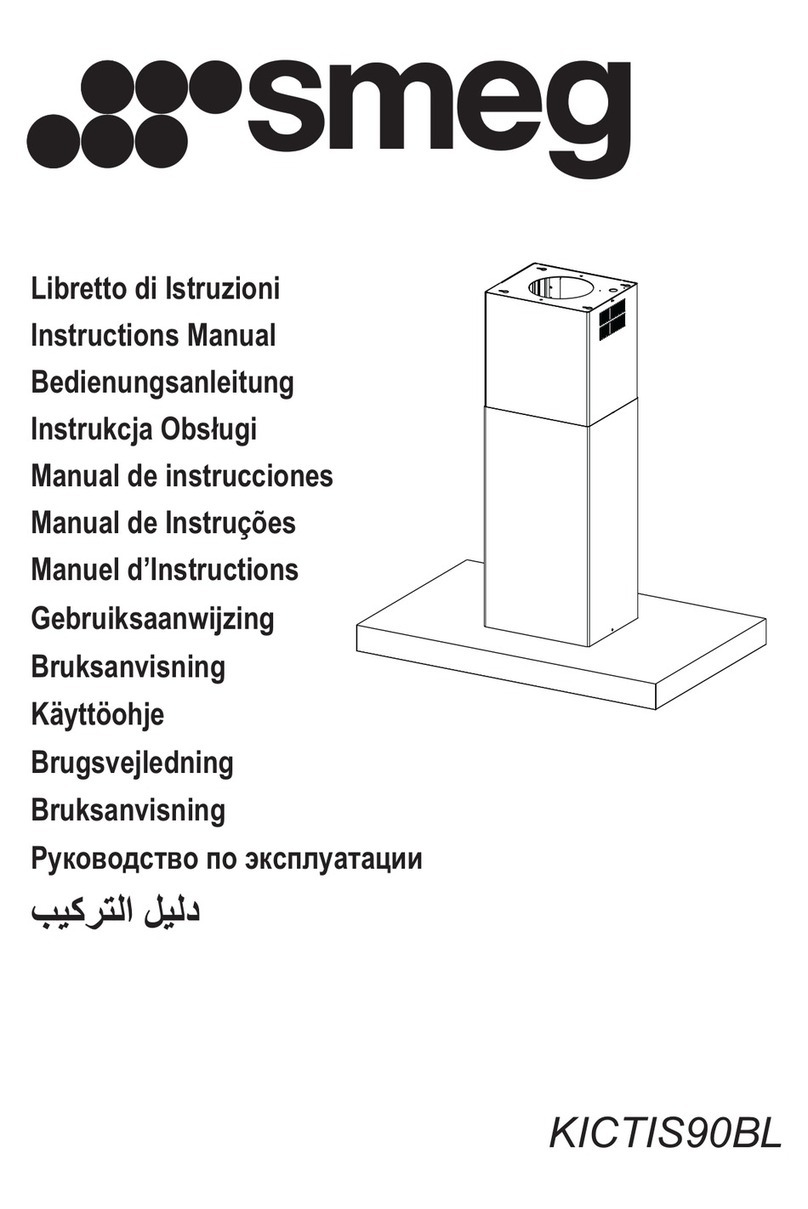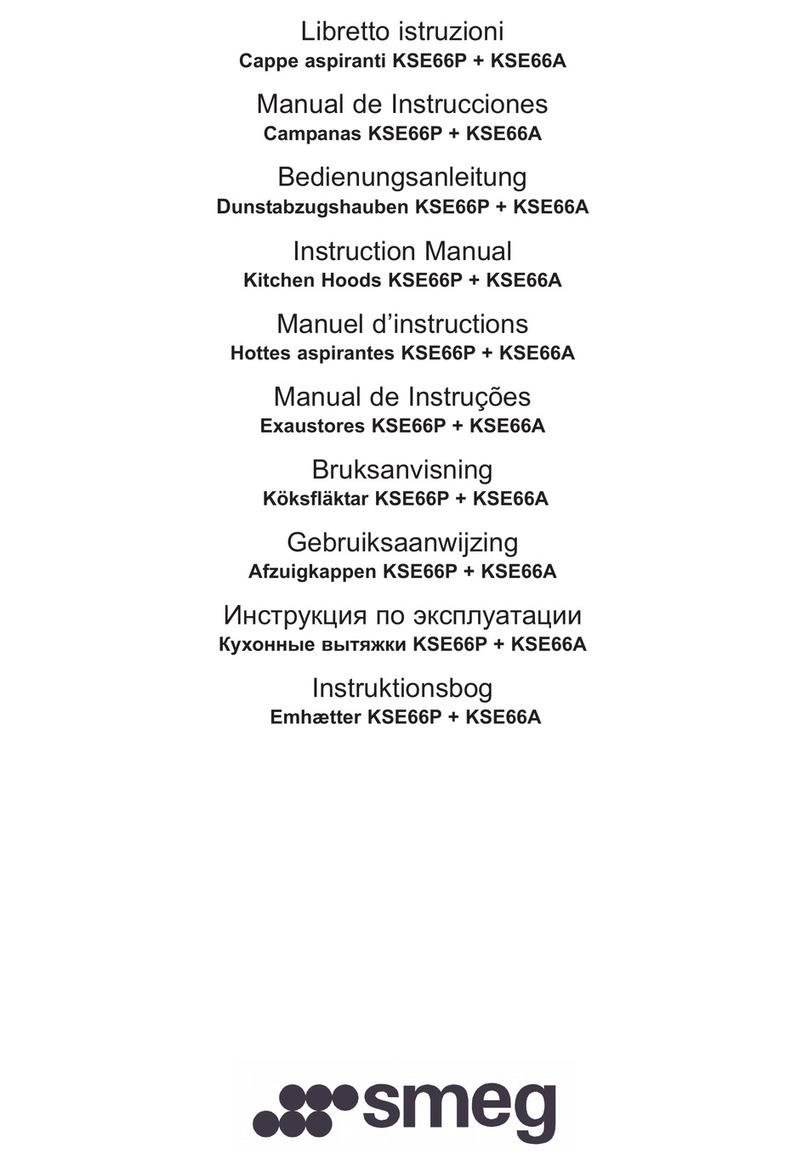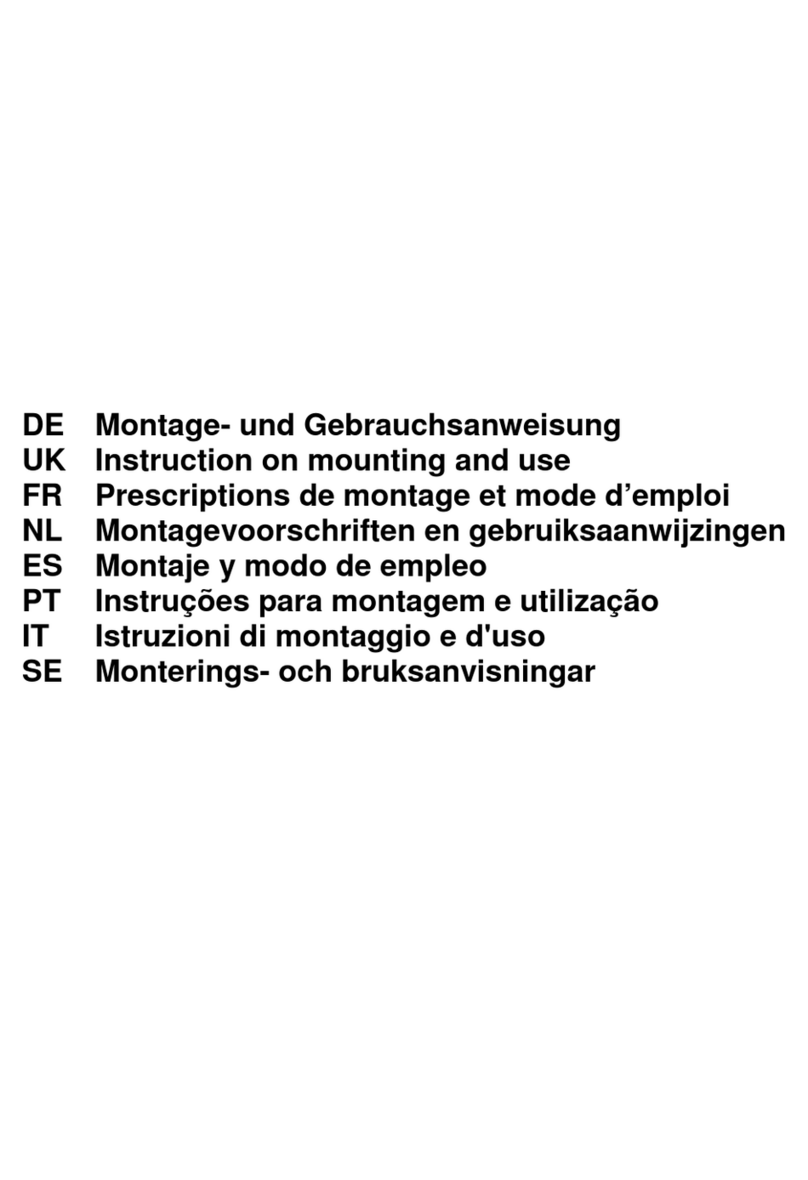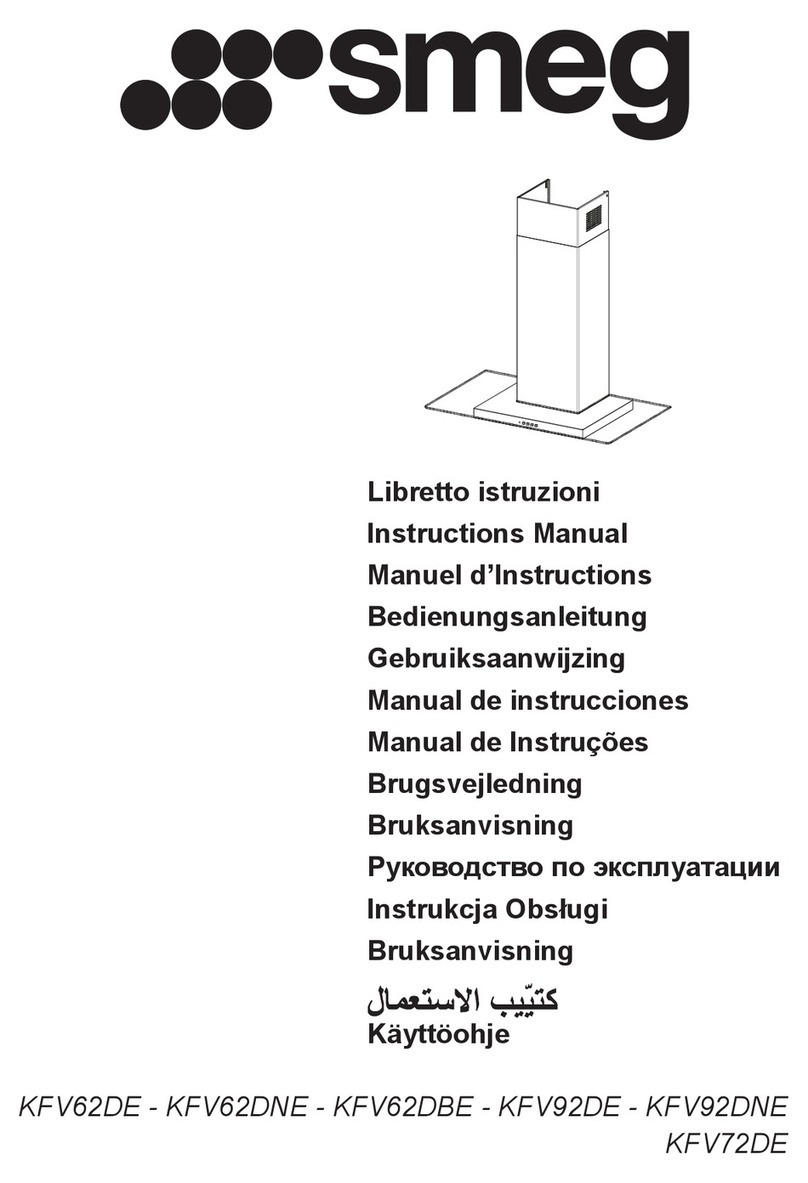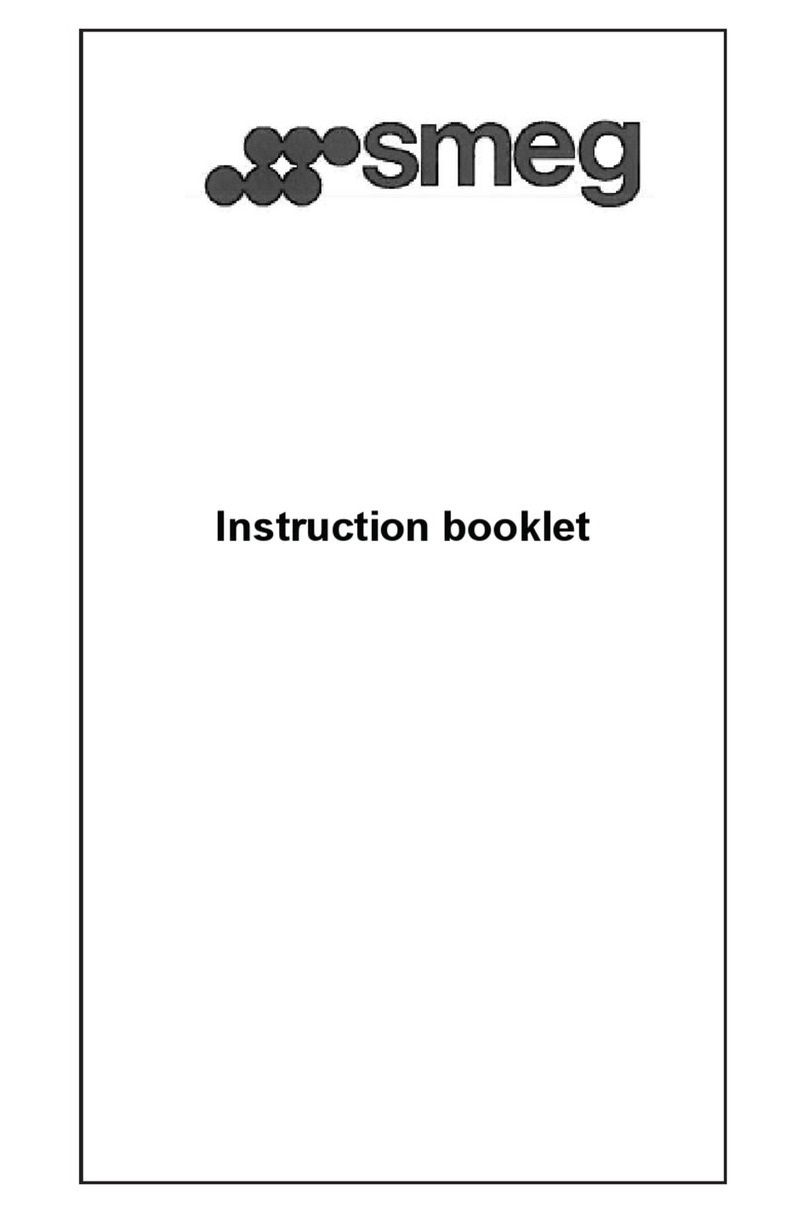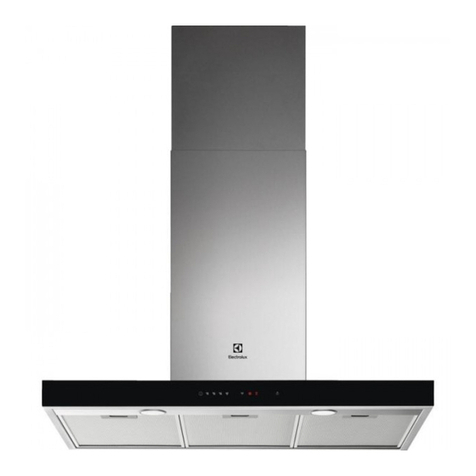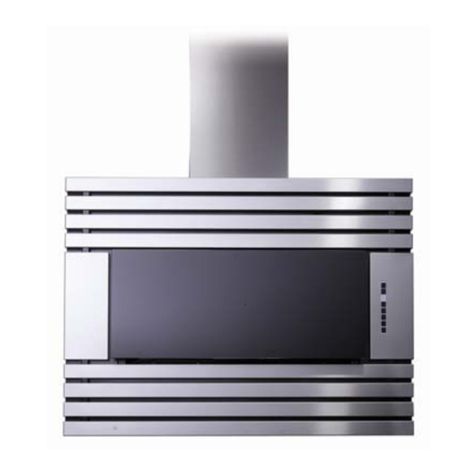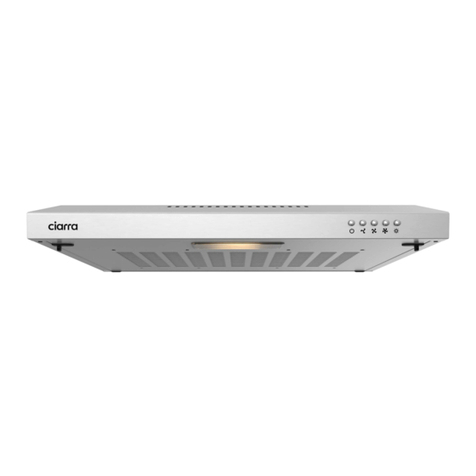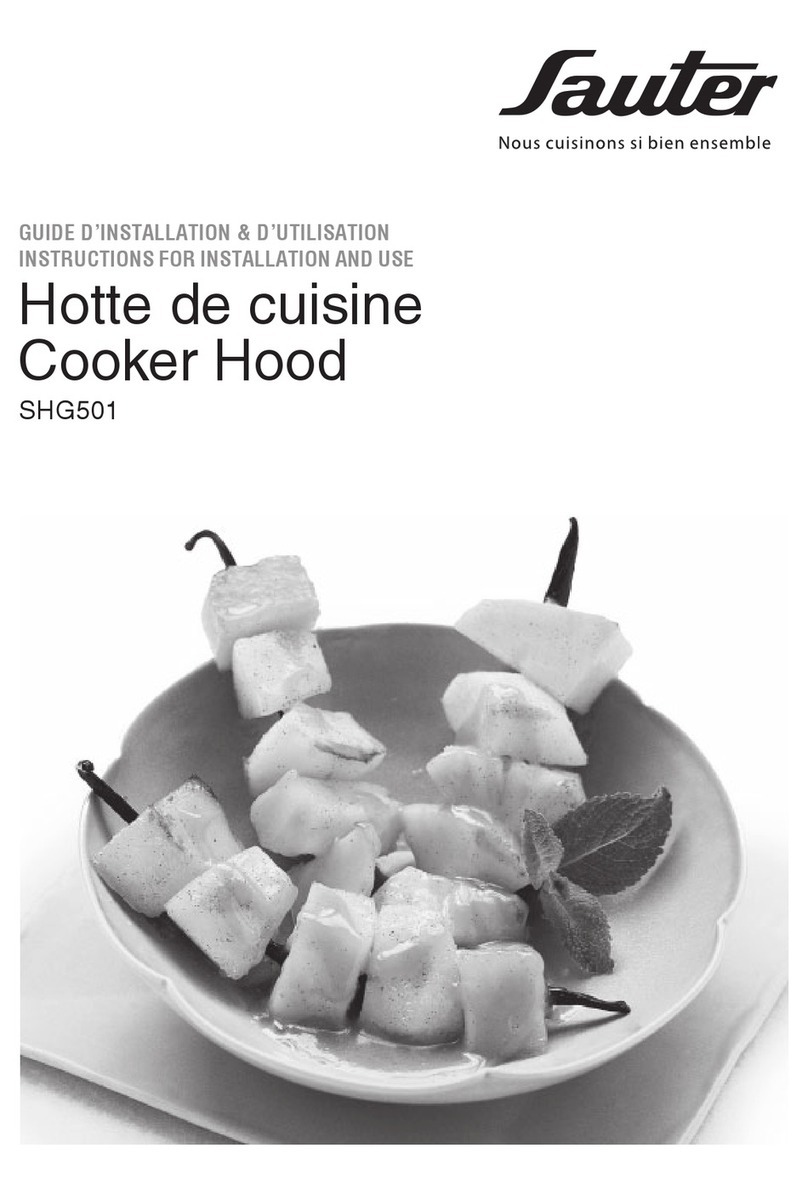2
Theair collected mustnotbeconveyedintoaduct used
toblow off smokesfrom appliancesfedwith anenergy
other than electricity (central heating systems,
thermosiphons, water-heaters, etc.).
Comply with the official instructions provided by the
competent authorities in merit when installing the
disposal duct. In addition, exhaust air should not be
discharged into a wall cavity, unless the cavity is
designed for that purpose.
Theroommustbewellaeratedincaseahoodandsome
other heat equipment fed with an energy other than
electricity (gas, oil, coal heaters, etc) operate at the
sametime.
In fact the intake hood, disposing of air, could create
avacuumin the room.Thevacuum should not exceed
0,04mbar.This preventsthegasexhaustedbytheheat
source from being intaken again. It is therefore
advisable to ensure the room contains air taps able to
ensure a steady flow of fresh air.
Check the data label inside the appliance; if the
symbol ( ) is printed, read the following: this
appliance has such technical particulars that it
belongs to class II insulation, therefore it must
not be earthed.
Check the data label inside the appliance; if the
symbol ( ) is NOT printed, read the following:
ATTENTION: This appliance must be earthed.
When making the electrical connections, check
that the current socket has a ground connection.
When making the electrical connections, check that
the voltage values correspond to those indicated on
the data plate inside the appliance itself. In case your
appliance is not furnished with a non separating
flexiblecable andhas no plug, or hasnot got any other
device ensuring omnipolar disconnection from the
electricity main, with a contact opening distance of at
least 3 mm, such separating device ensuring
disconnection from the main must be included in the
fixedinstallation.Ifyour unit features a powerleadand
plug, position this so the plug is accessible.
Alwaysswitch off theelectricity supply beforecarrying
out any cleaning or servicing operations on the
appliance.
USE
Avoid using materials which could cause spurts of
flame (flambées) near the appliance.
When frying, take particular care to prevent oil and
greasefromcatchingfire. Already used oil is especially
dangerous in this respect. Do not use uncovered
electric grates.
To avoid possible risks of fire always comply with the
indicatedinstructionswhencleaning anti-grease filters
andwhenremovinggreasedepositsfromtheappliance.
This appliance is not intended for use by persons
(including children) with reduced physical, sensory or
mental capabilities, or lack of experience and
knowledge, unless they have been given supervision
or instruction concerning use of the appliance by a
personresponsiblefortheirsafety.Children should be
supervised to ensure that they do not play with the
appliance.
Caution:accessiblepartsmaybecomehotwhenused
with cooking appliances.
This kitchen hood is intended for installation in
domestic kitchens above cooktops, cooking devices
and similar kitchen equipment.
MAINTENANCE
Thorough servicing guarantees correct and long-
lasting operation.
Anyfatdeposits shouldberemovedfromtheappliance
periodicallydepending onamountofuse(atleast every
2months).Avoidusingabrasiveorcorrosiveproducts.
Tocleanpaintedappliancesontheoutside,useacloth
dipped in lukewarm water and neutral detergent.
To clean steel, copper or brass appliances on the
outside, it is always best to use specific products,
followingthe instructions onthe products themselves.
To clean the inside of the appliance, use a cloth (or
brush) dipped in denatured ethyl alcohol.
FRANCAIS(FR)
ATTENTION
La distance minimum entre la surface de support des
casserolessurle plan de cuissonetlapartie inférieure
de la hotte doit mesurer 65 cm, sauf si les instructions
pour l’installation sont différentes. Si les instructions
pour l’installation du plan de cuisson indiquent une
distancesupérieure, cettedernièredoitêtrerespectée.
L'air aspiré ne doit pas être canalisé dans un conduit
qui est utilisé pour évacuer les fumées produites par
des appareils alimentés par des sources d'énergies
autres que l'énergie électrique (installations de
chauffage central, radiateurs, chauffe-eau, etc.).
Pour évacuer l'air qui doit être éliminé respectez les
prescriptions des autorités compétentes. De plus l'air
qui doit être évacué ne doit pas être déchargé dans
unecavitédumur,àmoinsquecettecavitésoitprévue
pour ce but.
Prévoyezuneaérationdelapièceadéquatequandune
hotteetdes appareils alimentés paruneénergieautre
quel'énergieélectrique (poêle àgaz,àhuile,àcharbon
etc.) sont utilisés en même temps. En effet, en
évacuant l'air, la hotte pourrait créer une dépression
dans la pièce. La pression négative de la pièce ne doit
pasdépasser0,04mbar,évitantainsi que la source de
chaleur provoque un appel des gaz qui doivent être
évacués. Il est donc nécessaire d'équiper la pièce de
prises d'air alimentant un flux d'air frais constant.
Contrôler la plaque des caractéristiques tech-
niques se trouvant à l’intérieur de l’appareil; si
le symbole ( ) figure sur la plaque suivre les
instructions suivantes: cet appareil est construit
pour appartenir à la classe d’isolation II ; il ne
doit donc pas être relié à la terre.
Contrôler la plaque des caractéristiques
techniques se trouvant à l’intérieur de l’appareil;
si le symbole ( ) NE figure pas sur la plaque
suivre les instructions suivantes: ATTENTION:
cet appareil doit être relié à la terre. Lors du
raccordement électrique s’assurer que la prise
de courant est équipée d’une connexion de mise
à la terre.




